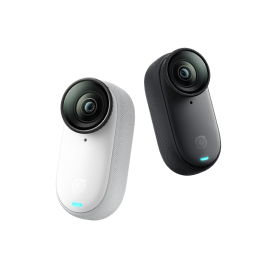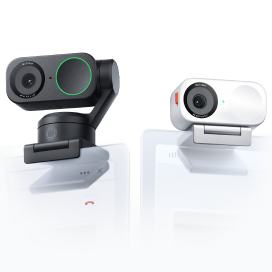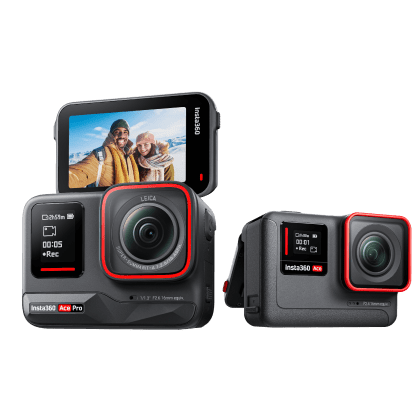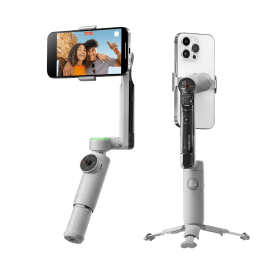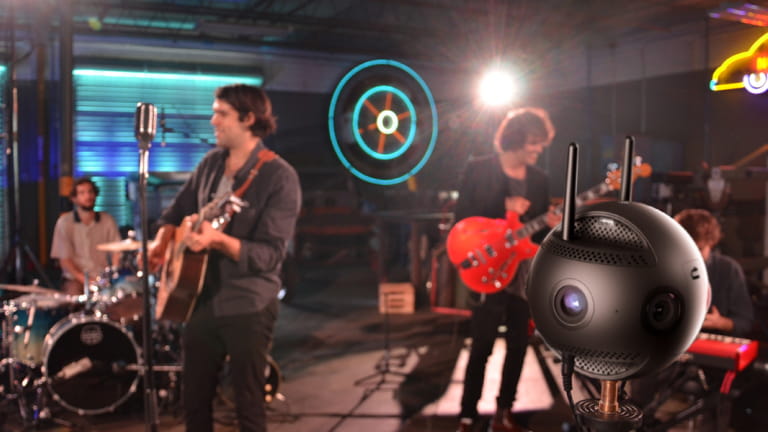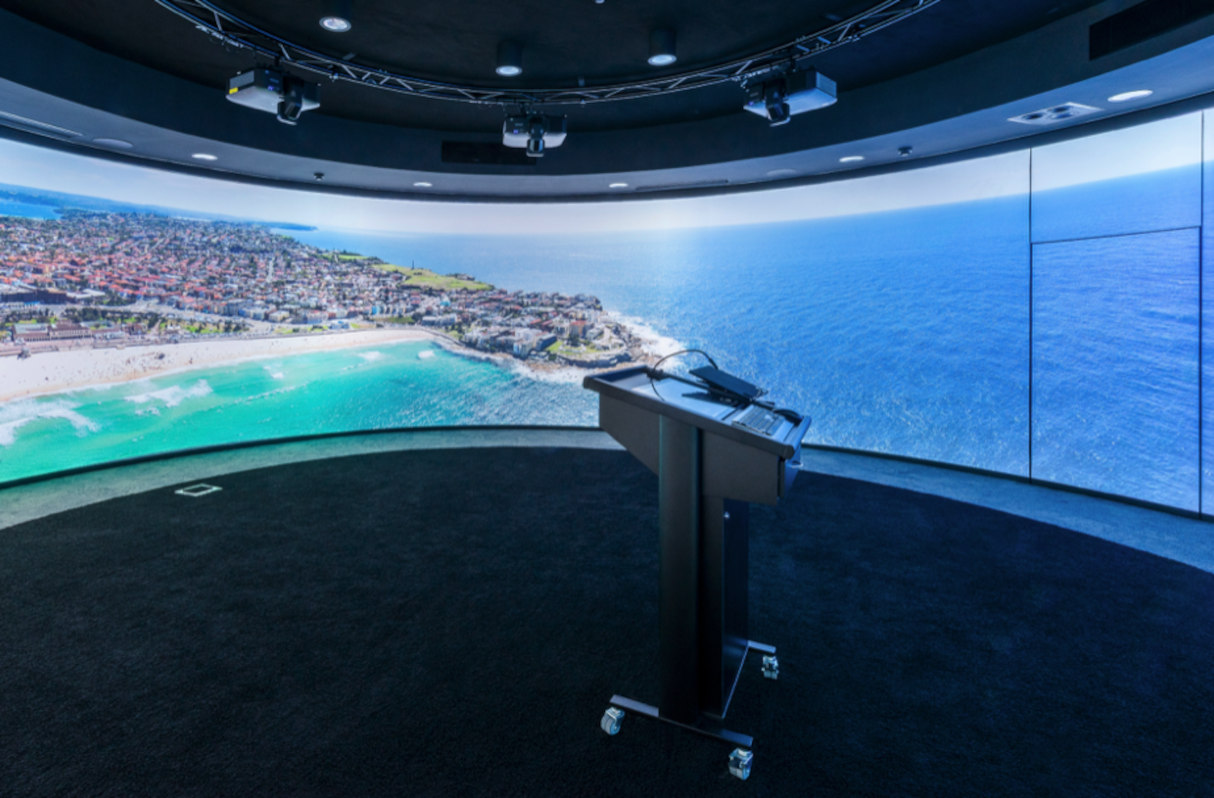A survey by Internet2 found that around 60% of higher education institutions in the U.S. are estimated to implement immersive learning experiences by 2021.
Virtual reality offers higher education institutions a new way to drive student engagement, results and retention. However, one key limitation of VR headsets is that they can create physical barriers between students and make it difficult to facilitate collaboration.
What if there was a way to effectively create one giant VR headset and put a classroom of students inside?
Deakin University has managed to do just this with a giant, cylindrical “immersive room”, equipped with seven projectors displaying 11K virtual reality footage. Up to 35 students can enter the room together and be immersed in the footage surrounding them in all directions.
Based in Victoria, Australia, Deakin University is one of the first universities worldwide to pioneer this game-changing immersive learning solution. Deakin teamed up with shared immersive space company, Igloo Vision to build the room and used the Insta360 Titan camera to shoot the ultra-high-quality 360 content for this groundbreaking project.
"With traditional formats, you’ll maybe capture the attention span of a student for a period of time. We’ve witnessed already that when students and participants come into the immersive room, they’re captivated for the entirety of what we’re delivering."Damian Blake, Head of School of Education
Why immersive learning?
Deakin University prides itself on over 40 years of experience as one of Australia’s leading tertiary education providers. The university teaches 60,000+ students per year across a wide range of courses. Its Faculty of Arts and Education are committed to being at the forefront of teaching, learning, and fostering cutting-edge research and discovery.
In early 2020, the Faculty began a project to renovate its Geelong Waurn Ponds Campus. In line with their dedication to being at the forefront of teaching, they decided to integrate immersive learning technology without the limitations of VR headsets.
Deakin University was attracted to an immersive room as a way for students to experience threshold concepts, engage in collaborative learning and critically analyze observations from multiple perspectives. Through this pedagogical approach, complex concepts can be more successfully taught and understood than using traditional teaching approaches.
The immersive room was designed by Igloo Vision, a company that creates shared immersive spaces for hundreds of clients around the world, in all kinds of industries. The immersive room is a high-specification 9.7 meter diameter Igloo Shared VR cylinder, equipped with seven Epson laser projectors. A separate, semi-circular editing suite houses the Igloo Immersive Media Player, a Presentation Server and four ultra-wide displays. The displays mimic the aspect ratio of the Igloo screen to assist in editing content. The Faculty uses Insta360 Titan to shoot 11K 360 content based on the curriculum requirements, going on-site to different locations as needed. The team then edits and renders the files and uses the Igloo Immersive Media Player to manage the content within the immersive room.
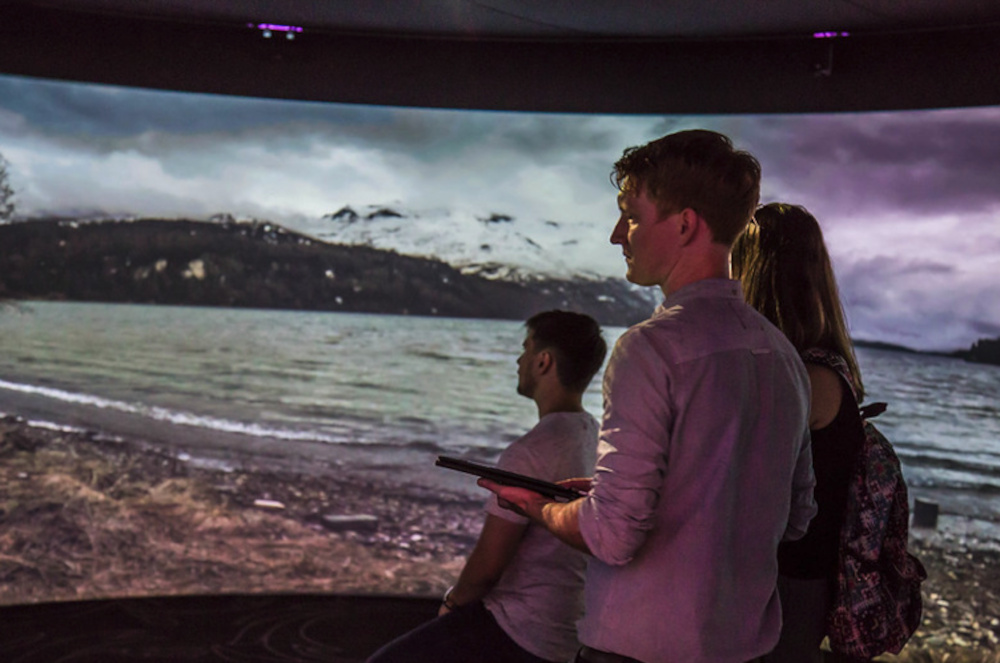
How the Faculty of Arts and Education utilizes the immersive classroom
In deciding which courses can best utilize the room, the university prioritizes units in which a lack of understanding of threshold concepts is a major contributor to poor retention rates for students. Threshold concepts are crucial ideas or patterns which are fundamental to understanding a topic. Once understood, they transform your perception, opening up a new and previously inaccessible way of thinking about something.
The immersive room helps the faculty to maximize understanding of these threshold concepts among students. Students can now engage with these concepts in a more immersive way than ever before, understanding them easier and quicker than through traditional methods.
For instance, pre-service teaching students who may be unable to visit a primary school classroom in person can enter the immersive room and experience footage from a real classroom of students. The room offers them more opportunities to get accustomed to being in a classroom before their first day of teaching. “We can take them into a classroom, see the group dynamics that are happening, how the furniture is arranged, and see the sorts of things that you would otherwise miss when you’re in the moment,” said Damian Blake, Head of School of Education.
Deakin University uses the immersive classroom across all 900 courses run by the Faculty of Arts and Education. Other faculties also use the room such as the Faculty of Health and the Faculty of Science, Engineering and Built Environment.
The university is also using the room for:
- Criminology courses, to give students a deeper understanding of surveillance, privacy and consent.
- Journalism courses, to help teach immersive storytelling techniques.
- Research, focused on how immersive technology can transform and improve educational practice.
Evaluating the impact of immersive learning
The impact of the immersive room has been astounding on both student engagement and students’ ability to learn vital threshold concepts. The immersive classroom has been a game changer in a number of ways:
- Students are able to experience an entirely new way of learning. They can look around, freeze frames and see things they didn’t see before.
- Full classes of students are able to share the VR experience. The students benefit hugely from being able to collaborate within the space and share their different perspectives.
- Visitors are awed by the room. The room serves as a showcase of the university’s innovation for prospective students and stakeholders.
“From the moment they step in the door, you can see their eyes light up, it’s a wow factor, and we’ve immediately got their attention.”Damian Blake, Head of School of Education

Using Insta360 Titan to shoot content for the immersive classroom
The team at Deakin shopped around to find a camera that suited their needs before deciding on Insta360 Titan. They needed a camera powerful enough to deliver ultra-high-quality 360 footage for their 9.7 meter diameter immersive room.
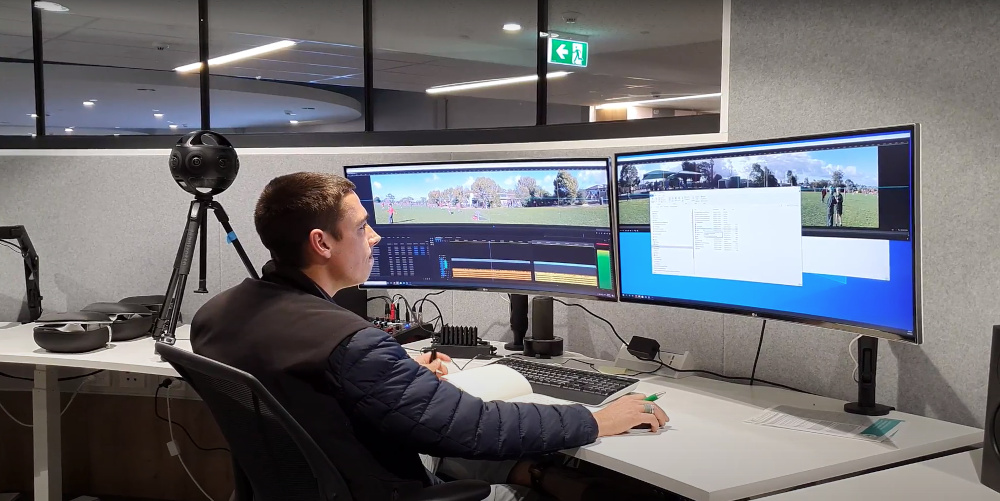
Insta360 Titan has 8x Micro Four Thirds Sensors, FlowState Stabilization and the power to capture 11K VR photo and video in stunning 10-bit color. These features deliver true-to-life footage that instantly transports viewers into a scene as if they were really there.
“We really needed an 11K image to get the quality we desired, and Titan ticked all the boxes.”Aubrey Comben, Digital Content Producer/Designer
Another benefit of Insta360 Titan for the university is its ease of use. Deakin’s space has become a real show piece for the university and is constantly visited by other faculties, external organizations and VIPs. This means they’re constantly finding new ways to use the space and it's important for them to have a quick production pipeline. Shooting with Titan helps them to quickly test out new concepts and get industry-specific content. This way, they can customize the experience for not only their own students and staff, but external partners as well.
Also, the ability of Titan to support live streaming is a huge plus. COVID has meant that temporarily, students can’t get into schools to do their practical sessions. Being able to do 360 live streams directly into a classroom and teleport students into an actual work environment is incredibly powerful.
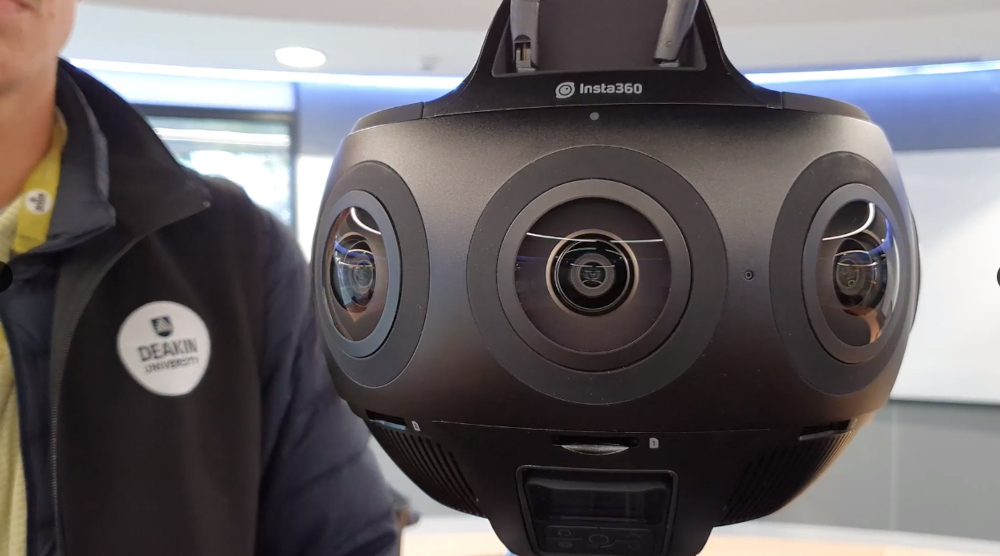
The demand for immersive rooms
The immersive room was initially used as a shared VR space to teleport groups of students to locations and situations that are not easily accessible or reproducible. COVID put a temporary stop to that and the space became a TV studio of sorts, enabling face-to-face teaching by having a large video wall of students.

Even before the pandemic, more and more companies were exploring new ways of working and collaborating. This included investigating immersive technology as a way to bring remotely-based teams together, as well as for simulation, visualization and presentations. COVID has accelerated the trend and now companies are looking to immersive rooms to transform their meeting rooms and collaboration spaces.
Because the Igloo immersive software and technology are so flexible, any company in any sector can benefit from them, including (but not limited to):
- Architecture, engineering, construction
- Real estate
- Mining and energy
- Healthcare
- Executive briefing suites
- And many more
Keen to keep up to date on Insta360 stories? Keep an eye on our blog and sign up for our mailing list. You can also contact our Enterprise team directly to see how 360 cameras can benefit your business.



